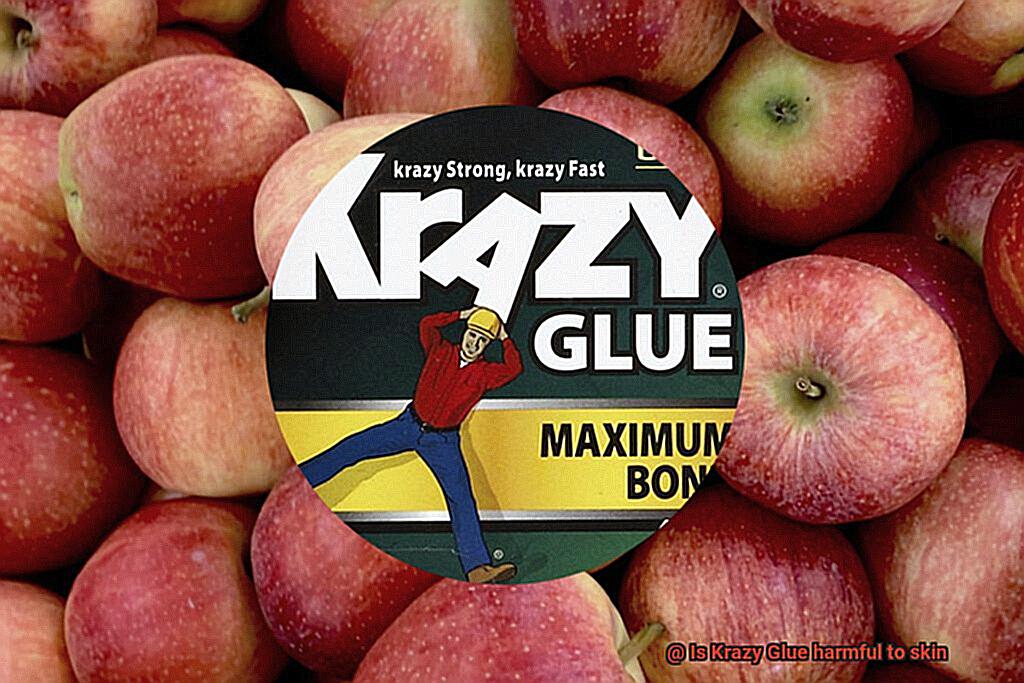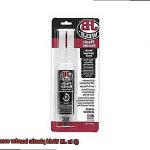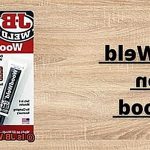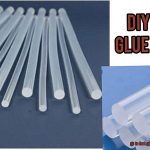We all know how Krazy Glue has become our go-to adhesive for those nifty projects that make us feel like creative geniuses. But let’s get real for a moment – have you ever wondered if this sticky wonder can be harmful to your precious skin?
Well, fear not. In this blog post, we’re about to dive headfirst into the world of Krazy Glue and its potential effects on your skin. Armed with some solid scientific knowledge, we’re here to give you the lowdown on whether this popular adhesive could cause any trouble. So, grab a cuppa, sit tight, and let’s uncover the truth about Krazy Glue and its impact on your skin.
What is Krazy Glue?
Contents
- 1 What is Krazy Glue?
- 2 How Does Krazy Glue Work?
- 3 Potential Risks of Using Krazy Glue on Skin
- 4 Symptoms of Skin Contact with Krazy Glue
- 5 Treatment for Skin Contact with Krazy Glue
- 6 Precautions to Take When Using Krazy Glue
- 7 Alternatives to Krazy Glue
- 8 Ingestion and Application to Open Wounds
- 9 Conclusion
Krazy Glue, also known as super glue, is an extraordinary adhesive that has become a household name for its ability to bond various materials together quickly and permanently. Made from a powerful compound called cyanoacrylate, Krazy Glue is renowned for its instant adhesion properties.
This remarkable adhesive is typically packaged in small tubes or bottles and has a thick, sticky consistency. While it is usually clear in color, there are variations available that may have different colors or additional substances for specific applications. Its concentrated formula means that only a thin layer is needed to create a strong bond.
One of the standout features of Krazy Glue is its rapid drying time. Upon exposure to air, cyanoacrylate reacts with moisture to form robust bonds in a matter of seconds. This swift curing process makes it perfect for projects that require immediate adhesion, such as fixing broken items or securing small parts.
The versatility of Krazy Glue is another reason for its popularity. It can successfully bond an array of materials, including plastic, metal, rubber, ceramic, and wood. Whether you need to mend a shattered toy or repair delicate jewelry, Krazy Glue often provides a reliable solution.
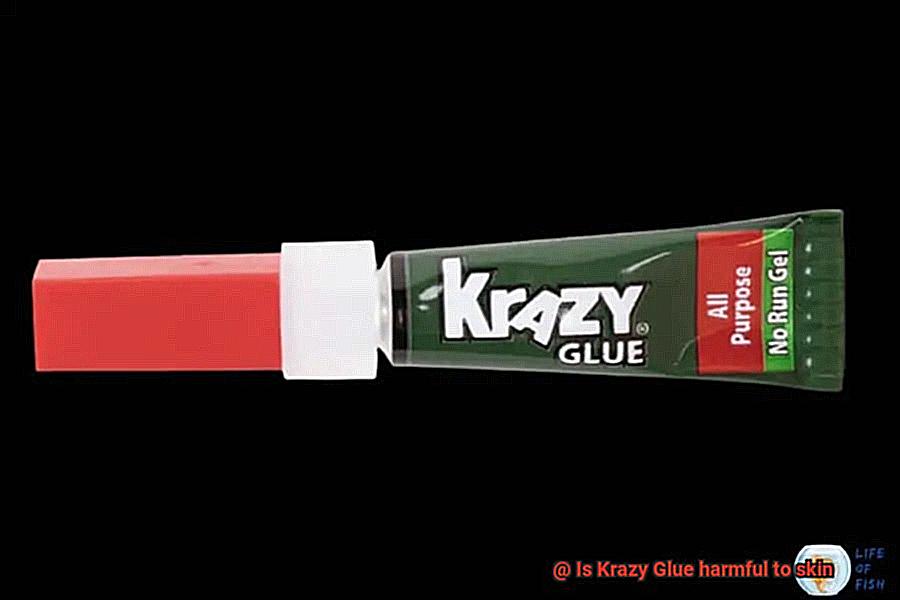
However, it is crucial to exercise caution when using Krazy Glue to avoid skin contact and potential irritation or allergic reactions. Although not intended for direct application on the skin, accidental contact can occur.
How Does Krazy Glue Work?
Let’s delve into the captivating world of adhesive chemistry and uncover the secrets behind this incredible adhesive. From its key ingredient to its rapid curing time, we’ll explore what makes Krazy Glue so extraordinary and versatile.
The Key Ingredient: Cyanoacrylate
Krazy Glue’s super strength is derived from its main ingredient – cyanoacrylate. This liquid monomer is an acrylic resin that polymerizes rapidly upon exposure to moisture in the air. As it reacts with the air, it forms robust chains of molecules, resulting in a solid and durable bond.
Rapid Curing Time
One of Krazy Glue’s standout features is its lightning-fast drying time. Upon application, the glue’s liquid cyanoacrylate promptly initiates the polymerization process. It quickly hardens, forging strong bonds with the materials it contacts. This swift curing time makes Krazy Glue perfect for urgent repairs and DIY endeavors.
The Strength of the Bond
The bond created by Krazy Glue is exceptionally sturdy due to the tight connections formed between the molecules of the glued surfaces. As cyanoacrylate polymerizes, it intricately weaves itself into the material, forming a resilient mesh that resists separation. This strength renders Krazy Glue ideal for bonding metals, plastics, ceramics, rubber, wood, and even certain fabrics.
Surface Preparation
To ensure optimal bonding, it is crucial to prepare surfaces before applying Krazy Glue. They should be meticulously cleaned, dried, and free from any oils or contaminants. Residue or moisture can hinder the adhesive’s ability to form a strong bond. Therefore, thorough cleaning and drying are essential prior to using Krazy Glue.
Potential Risks of Using Krazy Glue on Skin
In moments of desperation, we’ve all reached for that trusty tube of Krazy Glue to fix a broken item or secure a craft project. However, before you consider using it on your skin, it’s crucial to understand the potential risks and complications that can arise from this seemingly harmless adhesive.
Bonding Mishaps:
Krazy Glue’s superpower lies in its ability to bond things together in a flash. But when applied to the skin, this can quickly become a sticky situation. The glue hardens rapidly, creating a strong bond that can be problematic if it occurs on sensitive areas or gets tangled in hair or clothing.
Allergic Reactions:
While Krazy Glue may be safe for most surfaces, it can trigger allergic reactions in some individuals. Skin irritation, redness, itching, and even blisters are possible reactions. It’s important to note that each person’s sensitivity varies, so what might be fine for one person could cause distress for another.
Wound Healing Woes:
Using Krazy Glue on open wounds or cuts is a big no-no. This adhesive forms an impermeable barrier, preventing air and moisture from reaching the wound. As a result, proper healing is delayed, increasing the risk of infection and prolonging the recovery process.
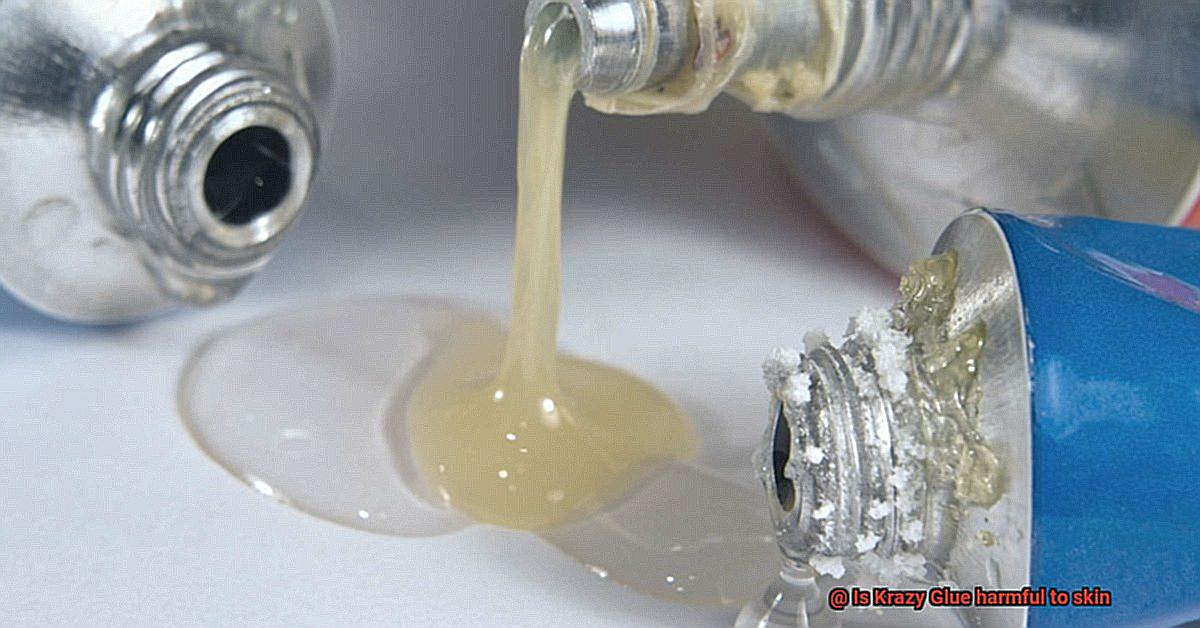
Long-Term Health Concerns:
Though research on the long-term effects is limited, there is concern that prolonged exposure to cyanoacrylate adhesives like Krazy Glue may have adverse health effects over time. The chemicals in the glue can potentially penetrate the skin and enter the bloodstream, posing risks that are yet to be fully understood.
Manufacturer’s Warnings and Instructions:
Paying attention to the warnings and instructions provided by Krazy Glue manufacturers is essential. They explicitly state that the glue should not be used on the skin and caution against contact with eyes or ingestion. Following these instructions can prevent unnecessary harm or complications.
Symptoms of Skin Contact with Krazy Glue
Skin contact with Krazy Glue can lead to a myriad of unpleasant symptoms and reactions. Prepare yourself for an intense wake-up call, as the first thing you’ll likely experience is an immediate and searing burning or stinging sensation. This is no casual encounter – your skin will be screaming for relief. But that’s not all, my friends. Brace yourself for the onslaught of redness, swelling, and irritation at the site of contact. It’s like a party your skin definitely didn’t RSVP to, and it’s not going to end well.
Now, before you even think about using Krazy Glue on any open wounds or cuts, let me stop you right there. Trust me when I say it’s not worth it. This adhesive can actually exacerbate your pain and discomfort, turning a minor injury into a major disaster. And let’s not forget about the sticky situation you’ll find yourself in when trying to remove a glue-covered bandage. Talk about frustration.
But here’s where things take a turn for the worse. For some unfortunate souls, skin contact with Krazy Glue can trigger an allergic reaction. Itching, hives, and a pesky rash may make an unwelcome appearance. And in severe cases, brace yourself for difficulty breathing or swallowing – a terrifying prospect that should never be taken lightly.
But wait, there’s more. Prolonged or repeated exposure to this potent adhesive can have dire consequences. If you allow the glue to linger on your skin for too long, chemical burns or damage to the skin tissue may ensue. And let’s not even contemplate what happens if this devilish substance accidentally finds its way into your precious eyes or delicate mouth – that’s a medical emergency waiting to happen.
Treatment for Skin Contact with Krazy Glue
Accidentally getting Krazy Glue on your skin can be quite a sticky situation. But fear not, because I’ve got you covered with effective methods to treat skin contact with this stubborn adhesive. So let’s dive in and learn how to tackle this challenge like a pro.
First and foremost, it’s crucial to resist the urge to panic and start pulling or forcefully removing the glue from your skin. Trust me when I say that this will only cause more damage and potentially tear your skin. Take a deep breath and follow these tried-and-true methods:
- Acetone-based nail polish remover: This is your secret weapon against Krazy Glue. The acetone in nail polish remover helps dissolve the adhesive and gently loosen its grip on your skin. Grab a cotton ball or pad, soak it in the nail polish remover, and gently dab it on the affected area. Give it some time to work its magic, and then gently rub or peel off the glue.
- Warm soapy water: If you don’t have nail polish remover on hand, don’t fret. You can still conquer that pesky glue by soaking the affected area in warm soapy water. The warmth of the water will soften the glue, making it easier to remove. You can also try gently rubbing the area with a cloth or using a soft-bristled toothbrush to aid in the process.
- Vegetable oil or petroleum jelly: No nail polish remover or warm soapy water available? No problem. Head to your kitchen cabinet and grab some vegetable oil or petroleum jelly. Apply a generous amount to the affected area and let it sit for a few minutes to break down the adhesive. Afterward, gently rub or peel off the glue.
- Seek medical advice if needed: In cases of prolonged exposure to Krazy Glue or if the adhesive seems particularly stubborn, it’s always wise to seek medical advice. Healthcare professionals have specialized adhesive removers and techniques that can safely remove the glue without causing harm to your skin. Don’t hesitate to reach out for expert assistance.
- Clean and moisturize: Once you’ve successfully removed the glue, it’s essential to clean the affected area with mild soap and water. This will help prevent any potential irritation or infection. After cleansing, apply a moisturizer to keep your skin hydrated and promote healing.
Remember, prevention is always better than treatment. So, next time you’re working with Krazy Glue, take precautions to avoid skin contact. But accidents happen, and now you know how to deal with them like a pro.
Precautions to Take When Using Krazy Glue
When it comes to using Krazy Glue, taking proper precautions is crucial to ensure your safety and avoid any sticky situations. Here are some important guidelines to follow when handling this powerful adhesive:
- Read and Follow Instructions: Before using Krazy Glue, carefully read and adhere to the instructions provided by the manufacturer. These instructions contain essential safety tips and usage guidelines specific to the glue.
- Wear Protective Gloves: It is highly recommended to wear protective gloves when handling Krazy Glue. These gloves act as an invisible shield, protecting your skin from accidental bonding and potential irritation.
- Wash Hands Thoroughly: If you choose not to wear gloves, make sure to wash your hands thoroughly before and after using Krazy Glue. This helps remove any residue that may cling to your skin.
- Avoid Sensitive Areas: Keep Krazy Glue away from sensitive areas such as eyes, mouth, or open wounds. Accidental contact with these areas can be extremely uncomfortable and potentially harmful. If contact occurs, immediately flush the area with water and seek medical attention if necessary.
- Ensure Proper Ventilation: Krazy Glue emits fumes that can be irritating to the respiratory system. To minimize exposure, use the glue in a well-ventilated area or consider wearing a mask for added protection.
- Use Sparingly: When applying Krazy Glue, remember that less is more. Applying excessive amounts of glue increases the risk of skin bonding and irritation. Use small, controlled amounts for optimal results.
- Handle Accidental Skin Bonding with Care: In the unfortunate event of accidental skin bonding, avoid pulling or tearing at the bonded skin forcefully. Instead, soak the affected area in warm soapy water or use an acetone-based nail polish remover specifically designed for removing adhesives. Gently massage or roll the skin apart once it has softened.
- Seek Medical Attention for Adverse Reactions: If you experience any redness, swelling, or severe pain after using Krazy Glue, do not hesitate to seek medical attention. Your health and safety should always be a priority.
Alternatives to Krazy Glue
When it comes to bonding materials together, Krazy Glue has long been a go-to choice. However, there are a plethora of alternatives available that may suit your needs even better. In this article, we will delve into the world of alternative adhesives, comparing and contrasting their pros and cons, to help you make an informed decision.
Epoxy Resin:
Known for its strength and versatility, epoxy resin is a formidable alternative to Krazy Glue. This adhesive can bond a wide range of materials together, including metal, plastic, wood, and ceramics, providing a durable and long-lasting bond. However, it is important to exercise caution when using epoxy resin. Its curing process releases fumes that require proper ventilation. Additionally, following the manufacturer’s instructions diligently ensures successful application.
Cyanoacrylate Adhesive (Super Glue):
Similar to Krazy Glue in many aspects, super glue offers a fast-drying solution for bonding various materials effectively. Its availability and ease of use make it a popular choice. Nonetheless, handling super glue requires care as it can cause skin irritation and quickly stick to skin. Delicate or porous materials may not fare well with this adhesive.
Double-Sided Tape:
For temporary fixes or craft projects, double-sided tape emerges as a simple yet effective alternative. Its ease of application and residue-free removal make it an ideal choice for those seeking convenience. However, it is worth noting that the bonding strength of double-sided tape may not match that of other alternatives, making it less suitable for permanent bonds or heavy-duty applications.
Hot Glue Gun:
Combining versatility and quick bonding capabilities, hot glue guns are widely available and relatively affordable alternatives to Krazy Glue. They are adept at bonding a variety of materials together. However, one must exercise caution during application to avoid burns caused by the high temperatures of hot glue. Heat-sensitive materials may not be compatible with this adhesive.
Adhesive Putty:
Adhesive putty offers a unique approach to bonding. Its pliable nature allows for molding and shaping, making it an excellent choice for non-permanent fixes. It can be easily removed without leaving residue. Nonetheless, adhesive putty may not provide the same level of strength as other alternatives, limiting its suitability for heavy-duty applications.
Ingestion and Application to Open Wounds
In moments of panic after accidentally cutting ourselves, we often scramble for quick fixes. But before grabbing that familiar tube of Krazy Glue, let’s pause for a moment. In this blog post, we will explore the potential dangers and adverse effects of using adhesives on open wounds. Get ready to dive into the details.
The Dangers of Ingestion:
Using adhesives like Krazy Glue internally can lead to disaster. This fast-drying adhesive is not meant for consumption and can wreak havoc on your digestive system. Nausea, vomiting, abdominal pain, and difficulty swallowing are common symptoms. If you or someone you know mistakenly ingests Krazy Glue, seek immediate medical attention. Healthcare professionals may recommend diluting the glue by drinking water or milk and using activated charcoal to absorb any remnants in the stomach.
Application Woes:
When it comes to applying adhesives like Krazy Glue to open wounds, it’s a big no-no. This adhesive is notorious for causing irritation, burning sensations, and tissue damage upon contact with exposed skin or mucous membranes. But what if you accidentally get adhesive on a wound? First, try not to panic. Carefully soak the affected area in warm, soapy water or utilize acetone-based nail polish remover to remove the glue. Avoid forcefully pulling or removing the glue to prevent further skin damage.
Post-Removal Precautions:
After successfully removing the adhesive, it is crucial to thoroughly cleanse the wound with mild soap and water. Applying an antibiotic ointment and covering the wound with a sterile bandage can aid in preventing infection. However, if you notice signs of infection or if the wound fails to heal properly after using adhesive, do not hesitate to consult a healthcare professional for further evaluation and treatment options.
It is essential to remember that these precautions specifically apply to adhesives like Krazy Glue and may differ for other types of adhesive products. Always read and follow the manufacturer’s instructions before applying any adhesive to your skin. Ultimately, it is better to prioritize your health and well-being over a quick fix. Stay safe, stay informed, and let’s explore better alternatives for wound care.
Also Read: Is Krazy Glue Toxic?
Conclusion
In conclusion, it is evident that Krazy Glue can indeed be harmful to the skin.
The powerful adhesive properties of this product can cause irritation, redness, and even burns when it comes into contact with the skin. It is crucial to handle Krazy Glue with caution and take appropriate safety measures to protect your skin from its potential harm.
If accidental skin contact occurs, immediate action should be taken to minimize the damage by rinsing the affected area thoroughly with warm water and seeking medical attention if necessary.

